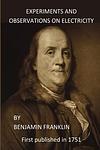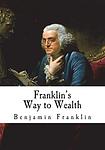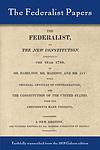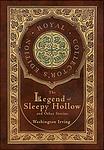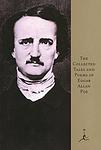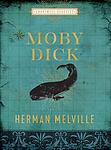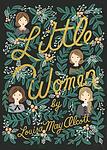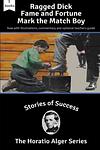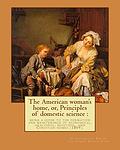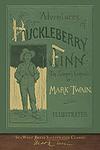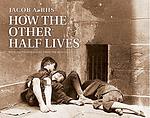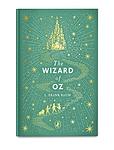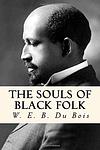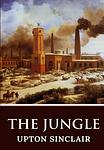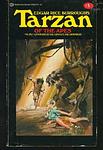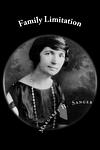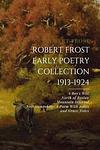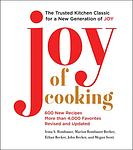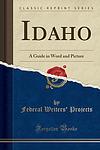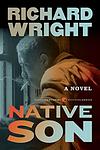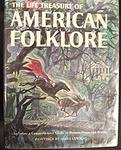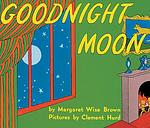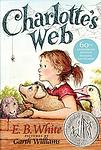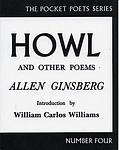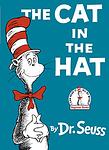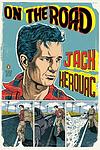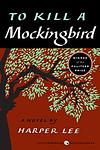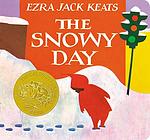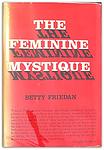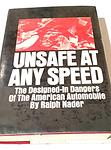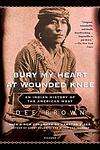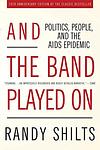Books That Shaped America
This is one of the 284 lists we use to generate our main The Greatest Books list.
-
The Bay Psalm Book by Stephen Daye
The book in question is one of the earliest volumes printed in British North America, known for being the first book of psalms to be translated into English in the New World. It was created by the Puritan leaders of the Massachusetts Bay Colony to provide a version of the Psalms that were more closely aligned with their theological beliefs and more literal to the Hebrew original than the psalm books being used in England at the time. This book not only reflects the religious convictions of the early settlers but also marks a significant milestone in the history of printing in America, as it was produced on the first printing press in the English colonies.
-
Experiments And Observations On Electricity by Benjamin Franklin
This foundational text in the field of electrical studies compiles a series of letters and documents detailing a variety of experiments and theoretical insights into the nature of electricity. The work is particularly renowned for its description of the author's famous kite experiment, which demonstrated the electrical nature of lightning. It also delves into the behavior of electrical charges, the concept of conservation of charge, and the invention of the lightning rod, among other topics. The author's accessible style and innovative approach not only advanced the understanding of electricity but also established key principles that would inform the future of electrical science and engineering.
-
Poor Richard Improved, The Way To Wealth by Benjamin Franklin
This book is a collection of wise sayings and practical advice on frugality, industry, and thrift. It compiles maxims and proverbs from annual almanacs, advocating for hard work, time management, and prudent financial planning as the cornerstones of prosperity and success. The work emphasizes the virtues of self-improvement and reflects the author's belief in the potential for self-made prosperity through disciplined personal conduct, offering timeless wisdom that has been influential in shaping attitudes towards personal finance and moral integrity.
-
Common Sense by Thomas Paine
This influential pamphlet, published in 1776, played a crucial role in persuading the colonists of the Thirteen Colonies to declare independence from Britain. It argues for the democratic system of government, criticizes monarchy and hereditary succession, and advocates for the inherent rights and freedoms of individuals. The text uses plain language to make complex political ideas accessible to the average citizen, promoting the idea that the colonies have a right to be an independent nation.
-
A Grammatical Institute Of The English Language by Noah Webster
This seminal work is a comprehensive guide to English grammar and education, laying the foundation for standardized American English. It serves as a textbook designed to teach young Americans proper spelling, pronunciation, and usage of the English language, reflecting a distinct American identity separate from British norms. The book emphasizes the need for an educational approach that is accessible and relevant to the emerging nation, and it played a crucial role in shaping the linguistic framework of the United States, influencing the way English is taught and spoken in America for generations.
-
The Federalist Papers by Alexander Hamilton, James Madison, John Jay
"The Federalist Papers" is a collection of 85 articles and essays written to promote the ratification of the United States Constitution. These works discuss the benefits of a stronger national government, the proposed structure of the government, and the division of powers among its various branches. They also address criticisms of the Constitution and detail the failures of the Articles of Confederation. The papers remain a primary source for interpretation of the U.S. Constitution and the intentions of its framers.
-
A Curious Hieroglyphic Bible by Isaiah Thomas
This early 19th-century publication is a unique take on the traditional Bible, aimed at engaging children with Scripture through the use of hieroglyphics, or small pictures, that represent words or phrases. Each passage of biblical text is accompanied by these illustrative symbols, intended to help young readers better understand and remember the stories and moral lessons of the Bible. It serves both as an educational tool and a novel approach to religious instruction, reflecting the pedagogical and religious values of its time.
-
A Survey Of The Roads Of The United States Of America by Christopher Colles
This historical work, published in the late 18th century, represents one of the earliest comprehensive efforts to systematically document the roadways crisscrossing the young United States. It serves as a pioneering atlas and travel guide, providing detailed maps and descriptions of routes, distances, and topographical features. Aimed at assisting travelers and promoting commerce, the book reflects the ambitious spirit of a nascent nation eager to connect its vast and varied landscapes, facilitating movement and communication across its burgeoning communities.
-
The Autobiography of Benjamin Franklin by Benjamin Franklin
This book is an autobiography of one of America's founding fathers, detailing his life from childhood to adulthood. The author shares his journey from humble beginnings as a printer's apprentice to becoming a successful inventor, writer, businessman, and statesman. The book provides an insight into his thoughts and philosophies on various subjects such as education, self-improvement, and public service, offering a unique look at the early American history through his eyes.
-
American Cookery by Amelia Simmons
Published in the late 18th century, this groundbreaking cookbook is recognized as the first truly American culinary reference, distinguishing itself from its British predecessors. It offers a glimpse into the post-revolutionary American kitchen, incorporating a mix of English cooking traditions with adaptations suited to the New World's unique ingredients. The book includes recipes that call for native American foods, such as cornmeal, squash, and turkey, and is known for introducing now-classic American dishes. It also provides practical advice for homemakers of the era on a wide range of topics, from cooking and baking to the management of household affairs.
-
New England Primer by Unknown
The book in question is a foundational textbook first published in the late 17th century, widely used in schools in colonial America for over a century. It served as an introductory reader and educational guide for children, combining alphabet and spelling lessons with religious and moral instruction. The content included simple rhymes to teach the alphabet, basic prayers, catechism answers, and moral lessons, all rooted in Christian teachings. Its influence was such that it played a significant role in shaping the early American educational system and the literacy and moral framework of the young United States.
-
Journals by Meriwether Lewis, William Clark
This book is a compilation of the detailed journals kept by two explorers during their expedition across the American West, from 1804 to 1806. The journals provide a first-hand account of their encounters with Native American tribes, their observations of new plant and animal species, and the challenges they faced while traversing uncharted territories. The explorers' writings not only offer insights into their historic journey but also serve as a valuable resource for understanding early 19th-century American history and the country's westward expansion.
-
Stories of Washington Irving by Washington Irving
The book is a collection of short stories penned by one of America's earliest celebrated authors. It includes a variety of tales ranging from the supernatural to historical fiction, all characterized by the author's distinctive narrative style. Some of the most notable stories include a schoolmaster's encounter with a headless horseman, a man who sleeps for twenty years, and a tale of a man who sells his soul to the devil. The stories are set in various locations, from the Hudson Valley to Europe, and they often reflect the author's satirical and humorous view of society.
-
The Book Of Mormon by Unknown
The book in question is a religious text central to the beliefs of the Latter-day Saint movement, which purports to be a historical account written by ancient prophets. It is said to be a record of God's dealings with the inhabitants of ancient America, spanning from approximately 600 BC to AD 421. The narrative is divided into books named after individual prophets and covers their teachings, the migration of a group from Jerusalem to the Americas, their civilisations, wars, and the visit of Jesus Christ to the Americas after his resurrection. The text also emphasizes themes of faith, repentance, and the redemptive power of Jesus Christ.
-
Mc Guffey's Newly Revised Eclectic Primer by William Holmes McGuffey
This educational book serves as an introductory textbook designed for young children in the 19th century, focusing on teaching the basics of reading and spelling through a series of simple, structured lessons. It incorporates moral lessons, basic vocabulary, and phonics, utilizing repetition and incremental progression to reinforce learning. The primer is part of a larger series that was widely used in American schools and became a staple in classrooms for its effective blend of pedagogy and values, reflecting the social and cultural norms of the time.
-
Peter Parley's Universal History by Samuel Goodrich
"Peter Parley's Universal History" is a 19th-century educational book designed to present a comprehensive yet accessible overview of world history for young readers. Through the engaging narrative voice of a fictional character, the book covers a wide range of historical events and cultures, from ancient civilizations to contemporary nations of the time. Its aim is to instill a sense of curiosity and a foundational understanding of global history, emphasizing moral lessons and the progress of humanity. The text is interspersed with illustrations and maps to aid in the visualization of historical topics, making it a popular tool for teaching history to children during the era of its publication.
-
Narrative of the Life of Frederick Douglass by Frederick Douglass
This autobiographical book provides a first-hand account of the life of a former slave, chronicling his experiences from his early years in bondage, his struggle to teach himself to read and write, his daring escape to freedom, and his subsequent rise as a prominent abolitionist. The narrative is a powerful exploration of the physical and psychological effects of slavery, making it a significant work in American history.
-
The Complete Tales and Poems of Edgar Allan Poe by Edgar Allan Poe
This collection brings together all of the author's most famous works, including poems, short stories, and novellas. Known for his macabre and gothic storytelling, the author's works are filled with themes of death, love lost, and human frailty. Notable inclusions are the haunting poem "The Raven," the chilling stories "The Tell-Tale Heart" and "The Fall of the House of Usher," and his only complete novel, "The Narrative of Arthur Gordon Pym."
-
The Scarlet Letter by Nathaniel Hawthorne
Set in 17th-century Puritan Boston, this novel tells the story of a woman who conceives a daughter through an affair and struggles to create a new life of repentance and dignity. She is forced to wear a scarlet "A" on her dress as a sign of her adultery while her lover, a revered local minister, remains unnamed and unpunished. Throughout the book, themes of sin, legalism, and guilt are explored.
-
Moby Dick by Herman Melville
The novel is a detailed narrative of a vengeful sea captain's obsessive quest to hunt down a giant white sperm whale that bit off his leg. The captain's relentless pursuit, despite the warnings and concerns of his crew, leads them on a dangerous journey across the seas. The story is a complex exploration of good and evil, obsession, and the nature of reality, filled with rich descriptions of whaling and the sea.
-
Uncle Tom's Cabin by Harriet Beecher Stowe
This renowned novel provides a harsh critique of American slavery through the story of Uncle Tom, a long-suffering black slave. The narrative follows Tom as he is sold and transported to the harsh South, encountering a variety of characters, both kind and cruel. The novel powerfully explores themes of faith, the immorality of slavery, and the concept of humanity, ultimately contributing to the abolitionist cause and leaving a significant impact on the American perception of slavery.
-
Walden by Henry David Thoreau
This work is a reflection upon simple living in natural surroundings, inspired by the author's two-year experience of living in a cabin near a woodland pond. Filled with philosophical insights, observations on nature, and declarations of independence from societal expectations, the book is a critique of the complexities of modern civilization and a call to appreciate the beauty and simplicity of the natural world. It explores themes such as self-reliance, solitude, and the individual's relationship with nature.
-
Leaves of Grass by Walt Whitman
"Leaves of Grass" is a collection of poetry that celebrates the human form and condition, while also exploring themes of democracy, nature, love, and friendship. The book, known for its departure from traditional poetic form, features a free verse style and the use of everyday language. The poet presents himself as both an individual and a universal figure, representing the collective American experience and identity. The collection is also notable for its controversial content at the time of its publication, including candid depictions of sexuality.
-
Little Women by Louisa May Alcott
This classic novel follows the lives of the four March sisters - Meg, Jo, Beth, and Amy - as they navigate the challenges and joys of adolescence and adulthood in 19th century New England. As they grow, they grapple with issues of poverty, gender roles, love, and personal identity, each in her own unique way. The story is a testament to the power of family, sisterhood, and female resilience in a time of societal constraints.
-
Mark, The Match Boy by Horatio Alger Jr.
The novel follows the story of a young orphan boy named Mark, who survives the harsh streets of New York City by selling matches. Despite his unfortunate circumstances, Mark's hard work, honesty, and determination exemplify the classic rags-to-riches theme. With the help of a kind benefactor, Mark's life takes a turn for the better, showcasing the idea that virtue and perseverance can lead to success and upward social mobility, which is a central tenet of the author's belief in the American Dream.
-
The American Woman's Home by Catharine E. Beecher, Harriet Beecher Stowe
This 19th-century guidebook serves as a comprehensive resource for women managing households, emphasizing the importance of creating a moral and efficient home environment. The text covers a wide range of topics, from domestic architecture and furniture arrangement to healthful cooking and child rearing. It reflects the era's gender roles and the belief in the woman's responsibility as the center of domestic life, aiming to elevate and educate women in their roles as homemakers and moral guides for their families, thereby contributing to the betterment of society as a whole.
-
The Common Law by Oliver Wendell Holmes Sr.
"The Common Law" is a seminal work that explores the historical development and underlying principles of the common law system, which originated in England and became the foundation for the legal system in the United States and many other former British colonies. The book delves into the evolution of legal concepts over time, examining how laws adapt to social needs and the influence of moral judgments on legal decisions. It discusses the role of precedent and judicial interpretation, and it emphasizes the importance of experience and practical outcomes in shaping the law. The author, a renowned legal scholar and Supreme Court Justice, provides a deep analysis of topics such as liability, criminal law, and property rights, offering insights into the logic and changing nature of legal rules.
-
The Adventures of Huckleberry Finn by Mark Twain
The novel follows the journey of a young boy named Huckleberry Finn and a runaway slave named Jim as they travel down the Mississippi River on a raft. Set in the American South before the Civil War, the story explores themes of friendship, freedom, and the hypocrisy of society. Through various adventures and encounters with a host of colorful characters, Huck grapples with his personal values, often clashing with the societal norms of the time.
-
Poems of Emily Dickinson by Emily Dickinson
This collection of poetry encapsulates the works of a renowned 19th-century American poet, known for her unique style and themes. The poems, often characterized by their unconventional punctuation and capitalization, explore a wide range of topics including death, immortality, love, and nature. The poet's introspective and often cryptic style has made her one of the most studied and celebrated figures in American literature.
-
How the Other Half Lives by Jacob A. Riis
The book is a detailed examination of the living conditions of the poor in New York City in the late 19th century. It provides a vivid and often shocking account of life in the slums, tenements and sweatshops of the city, based on the author's own investigative journalism. The book had a significant impact on public opinion and led to changes in housing laws and social policy.
-
The Frontier in American History by Frederick J. Turner
"The Frontier in American History" examines the importance of the unsettled, western frontier in shaping the political, economic, and social identity of the United States. The book argues that the constant westward expansion and the challenges it presented played a crucial role in developing American democracy, individualism, and innovative spirit. The author further posits that the closing of this frontier at the end of the 19th century marked a significant shift in American society, which now had to find new ways of growth and innovation.
-
The Red Badge of Courage by Stephen Crane
"The Red Badge of Courage" is a novel set during the American Civil War, focusing on a young private in the Union Army who flees from the field of battle. Overcome with shame, he longs for a wound, a "red badge of courage," to counteract his cowardice. When his regiment once again faces the enemy, he acts as the standard-bearer, proving his courage. The book explores the themes of heroism, manhood, and the illusion versus reality of war.
-
The Wonderful Wizard of Oz by L. Frank Baum
A young girl from Kansas is swept away by a tornado to a fantastical land called Oz. To return home, she must find the mysterious Wizard in the Emerald City, and on her journey, she befriends a Scarecrow in need of a brain, a Tin Woodman longing for a heart, and a Cowardly Lion seeking courage. They all hope the Wizard can grant their wishes, but they must first overcome the Wicked Witch of the West who poses a great danger to them.
-
Harriet, The Moses Of Her People by Sarah H. Bradford
This book provides a detailed account of the life and achievements of an iconic African American woman who escaped slavery and became an instrumental figure in the Underground Railroad, leading dozens of enslaved individuals to freedom. The narrative delves into her courageous exploits, her role as a spy and nurse during the Civil War, and her continued advocacy for the rights of African Americans and women. The biography celebrates her indomitable spirit, strategic brilliance, and unwavering commitment to justice, painting a portrait of a true American hero whose legacy of selflessness and bravery continues to inspire generations.
-
The Call of the Wild by Jack London
This book tells the story of a domesticated dog named Buck who is stolen from his home in California and sold into service as a sled dog in Alaska. As he faces harsh conditions and brutal treatment, Buck must learn to adapt to the wild and harsh environment, ultimately reverting to his ancestral instincts in order to survive. The book explores themes of nature versus nurture, civilization versus wilderness, and the struggle for dominance.
-
The Souls of Black Folk by W. E. B. Du Bois
This seminal work is a collection of essays that explores the history and condition of African Americans at the turn of the 20th century. It delves into the issues of race, class, and the socio-economic realities faced by black people post-emancipation. The author employs a combination of history, sociology, and personal narrative to present a powerful critique of American society, highlighting the struggle for civil rights, the importance of black spirituals, and the concept of "double consciousness" - the idea of viewing oneself through the lens of a society that sees you as inferior.
-
The History of the Standard Oil Company by Ida Tarbell
This book provides an in-depth investigation into the rise of the Standard Oil Company, revealing its unethical and monopolistic business practices. It chronicles the company's growth from a small oil refinery into a dominant force in the American economy, led by a cunning and ruthless businessman. The narrative exposes the company's tactics of crushing competition, exploiting workers, and manipulating prices, which eventually led to public outcry and legal action. This groundbreaking work contributed significantly to the breakup of Standard Oil and the establishment of anti-trust laws in the United States.
-
The Jungle by Upton Sinclair
This novel exposes the harsh conditions and exploited lives of immigrants in the United States in Chicago and similar industrialized cities. The protagonist, a young Lithuanian immigrant, works in the meatpacking industry and experiences the extreme poverty, poor working conditions, and lack of social services. The narrative explores the corruption of the American meatpacking industry in the early 20th century and the hardships faced by the working class, leading to significant public outcry that contributed to the passage of the Pure Food and Drug Act.
-
The Education of Henry Adams by Henry Adams
"The Education of Henry Adams" is an autobiographical account that explores the changes in society and politics during the 19th and 20th century from the perspective of an individual who is both a product and critic of that era. The narrative is structured around the author's self-perceived failure to understand or adapt to these changes, despite his privileged education and social status. The book is a reflection on the author's life, his attempts to make sense of the world around him, and his struggle to reconcile his traditional upbringing with the rapid advancements of the modern world.
-
Pragmatism by William James
The book in question is a seminal work in the philosophical tradition of pragmatism, which argues that the truth of ideas is measured not by their correspondence to an objective reality, but by their practical effects and utility. The author challenges the notion of fixed, absolute truths, proposing instead that beliefs should be seen as tools for action and that their validity depends on their success in solving problems and guiding experiences. Through a series of lectures, the text explores the implications of this philosophy for various fields, including religion, metaphysics, and science, ultimately advocating for a more flexible, open-ended approach to thinking and a tolerance for diverse perspectives in the pursuit of knowledge and understanding.
-
Riders of the Purple Sage by Zane Grey
"Riders of the Purple Sage" is a classic Western novel that tells the story of a woman named Jane Withersteen, who is persecuted by her Mormon fundamentalist church community in Utah for her friendship with a non-Mormon man. She is protected by a mysterious rider known as Lassiter, a gunslinger who is seeking revenge for the death of his sister. The novel explores themes of religious intolerance, the struggle for personal freedom, and the violent frontier life in the American West.
-
Tarzan of the Apes by Edgar Rice Burroughs
This novel follows the story of a young boy raised by apes in the African jungle after his aristocratic parents are marooned and later perish. He grows up learning the laws of the jungle and the ways of the wild, eventually becoming the leader of his ape tribe. His life takes a turn when he encounters other humans, particularly a young woman, which leads him to grapple with his dual nature as both man and beast. The book explores themes of identity, civilization versus nature, and the concept of the "noble savage."
-
Family Limitation by Margaret Sanger
"Family Limitation" is a pioneering work that advocates for the importance of birth control and family planning. Written in the early 20th century, the book provides practical information and guidance on various contraceptive methods available at the time, aiming to empower women with the knowledge to make informed decisions about their reproductive health. The author, a prominent birth control activist, argues for the moral and social necessity of family limitation, emphasizing its role in alleviating poverty and improving the welfare of women and children. The book was considered highly controversial during its publication but played a significant role in the birth control movement and the eventual widespread acceptance of contraception.
-
My Antonia by Willa Cather
This novel follows the life of Antonia Shimerda, a Bohemian immigrant to the United States, through the eyes of her childhood friend, Jim Burden. The narrative explores their lives in the harsh environment of the American Midwest, their struggles with poverty, cultural adaptation, and personal growth. Antonia's resilience, strength, and love for life inspire Jim, who moves away for education and career but remains emotionally tied to the woman and the prairie life he left behind. The book is a compelling portrayal of pioneer life, human resilience, and the enduring power of friendship.
-
Spring And All by William Carlos Williams
The book in question is a hybrid work that combines poetry with prose, reflecting on the nature of creativity and the cycle of life. It presents a series of musings on the emergence of new life in spring, using this seasonal transformation as a metaphor for artistic innovation. The work is a seminal example of modernist experimentation, breaking with traditional forms and embracing a free verse style that captures the dynamic and often chaotic process of growth and change. Through its vivid imagery and philosophical insights, the book challenges readers to see the world with fresh eyes and recognize the potential for renewal and rebirth in the everyday.
-
New Hampshire by Robert Frost
"New Hampshire" is a collection of poems that delve into the rustic beauty and the complex social and natural landscapes of rural New England. Through vivid imagery and masterful use of language, the poet explores themes of nature, human experience, and the passage of time. The work reflects on the interplay between the individual and the community, the fleeting moments of joy, and the inevitable changes brought by the seasons and life itself. With a mix of longer narrative poems and shorter lyrical pieces, the collection captures the essence of early 20th-century American life, grounded in the specificities of the New Hampshire countryside.
-
The Great Gatsby by F. Scott Fitzgerald
Set in the summer of 1922, the novel follows the life of a young and mysterious millionaire, his extravagant lifestyle in Long Island, and his obsessive love for a beautiful former debutante. As the story unfolds, the millionaire's dark secrets and the corrupt reality of the American dream during the Jazz Age are revealed. The narrative is a critique of the hedonistic excess and moral decay of the era, ultimately leading to tragic consequences.
-
The Weary Blues by Langston Hughes
This book is a seminal collection of poems that delves into the African American experience during the early 20th century, capturing the struggles, joys, and cultural vibrancy of the Harlem Renaissance. Through its titular poem and others within the collection, the work explores themes of racial identity, social injustice, and the power of music and art as forms of resistance and celebration. The lyrical verses blend the rhythm of blues and jazz with vivid imagery, showcasing the author's innovative use of language and his profound connection to the Black community's heritage and spirit.
-
The Sound and the Fury by William Faulkner
The novel is a complex exploration of the tragic Compson family from the American South. Told from four distinct perspectives, the story unfolds through stream of consciousness narratives, each revealing their own understanding of the family's decline. The characters grapple with post-Civil War societal changes, personal loss, and their own mental instability. The narrative is marked by themes of time, innocence, and the burdens of the past.
-
Red Harvest by Dashiell Hammett
In this hard-boiled detective novel, a private investigator is hired by a newspaper publisher in a corrupt western town to uncover the truth behind the murder of a local worker. As he delves deeper into the investigation, he finds himself embroiled in a chaotic war between rival gangs, corrupt police, and greedy industrialists. The detective uses his cunning and manipulation to turn these factions against each other, leading to a bloody and violent resolution.
-
The Joy of Cooking by Irma S. Rombauer, Marion Rombauer Becker, Ethan Becker
This book is a comprehensive guide to home cooking, providing readers with a wide range of recipes, techniques, and advice for all kinds of dishes. It covers everything from appetizers to desserts, with clear instructions and illustrations to make the process easy and enjoyable. The book also includes helpful tips on meal planning, food safety, and nutrition, making it a valuable resource for both beginners and experienced cooks.
-
Gone With the Wind by Margaret Mitchell
Set against the backdrop of the American Civil War and Reconstruction era, this novel follows the life of a young Southern belle, who is known for her beauty and charm. Her life takes a turn when she is forced to make drastic changes to survive the war and its aftermath. The story revolves around her struggle to maintain her family's plantation and her complicated love life, especially her unrequited love for a married man, and her tumultuous relationship with a roguish blockade runner.
-
How to Win Friends and Influence People by Dale Carnegie
This iconic self-help book provides practical advice and techniques for mastering interpersonal skills and improving communication. It emphasizes the importance of understanding others' perspectives, showing genuine interest in people, and making others feel important. The book offers strategies for handling people without arousing resentment, encouraging others to share their ideas, and changing people's behavior without causing offense or arousing resentment. It also provides tips on how to make a good first impression, become a good conversationalist, and inspire enthusiasm among associates.
-
Their Eyes Were Watching God by Zora Neale Hurston
This novel follows the life of Janie Crawford, a young African-American woman, in the early 20th century. She embarks on a journey through three marriages and self-discovery while challenging the societal norms of her time. The narrative explores her struggle for personal freedom, fulfillment, and identity against the backdrop of racism and gender expectations, ultimately emphasizing the importance of independence and personal growth.
-
Idaho: A Guide In Word And Pictures by Federal Writers' Project
The book provides a comprehensive guide to the state of Idaho, offering a rich tapestry of historical context, geographical features, and cultural insights. Compiled by a team of writers, the guide delves into the state's diverse landscapes, from its rugged mountains and vast wilderness areas to its fertile agricultural plains. It includes detailed descriptions of cities and towns, points of interest, and local lore, alongside photographs that capture the essence of Idaho's natural beauty. The work serves as both an informative resource for travelers and a valuable record of the state's heritage and way of life during the time of its publication.
-
Our Town by Thornton Wilder
This play is a poignant depiction of life in a small American town called Grover's Corners, New Hampshire, at the turn of the 20th century. Through the everyday lives of its citizens, the narrative explores universal themes of love, marriage, mortality, and the passage of time. The story is narrated by a stage manager who directly addresses the audience and interacts with the characters, guiding viewers through the experiences of two families, the Gibbs and the Webbs. The play's minimalist staging and meta-theatrical elements emphasize the ephemeral nature of human existence, encouraging the audience to appreciate the beauty of life's ordinary moments.
-
The Grapes of Wrath by John Steinbeck
The book follows the Joad family, Oklahoma farmers displaced from their land during the Great Depression. The family, alongside thousands of other "Okies," travel to California in search of work and a better life. Throughout their journey, they face numerous hardships and injustices, yet maintain their humanity through unity and shared sacrifice. The narrative explores themes of man's inhumanity to man, the dignity of wrath, and the power of family and friendship, offering a stark and moving portrayal of the harsh realities of American migrant laborers during the 1930s.
-
For Whom the Bell Tolls by Ernest Hemingway
Set in the backdrop of the Spanish Civil War, the novel follows the story of an American dynamiter, who is assigned the task of blowing up a bridge during a crucial attack on the city of Segovia. Alongside the war narrative, the story also explores his relationships with various characters, including his love affair with a young Spanish woman. The narrative beautifully encapsulates themes of love, war, death, and the transient nature of life.
-
Native Son by Richard Wright
This novel tells the story of Bigger Thomas, a young African-American man living in Chicago's South Side during the 1930s. Bigger's life takes a tragic turn when he accidentally kills a young white woman. The incident leads to his arrest and trial, revealing the deep-seated racial prejudices and injustices prevalent in American society at the time. The narrative explores themes of poverty, systemic racism, fear, and the effects of oppression.
-
A Tree Grows in Brooklyn by Betty Smith
This classic novel follows the life of Francie Nolan, a young girl growing up in the slums of early 20th century Brooklyn. The narrative explores her experiences with poverty, her pursuit of education, and her dreams of a better life. The tree in the title serves as a symbol of her resilience and hope, growing and thriving despite the harsh conditions around it, much like Francie herself.
-
A Treasury Of American Folklore by Benjamin A. Botkin
This anthology is a comprehensive collection of stories, songs, legends, and traditions from the cultural heritage of the United States. Compiled to capture the diverse tapestry of American society, it includes tales from various regions and communities, offering insights into the beliefs, customs, and humor that have shaped the nation's identity. From the lore of Native Americans to the ballads of the Appalachian Mountains, from African American spirituals to the tall tales of the frontier, this treasury serves as a celebration of the folk narrative and the oral tradition that has been passed down through generations, preserving the richness of America's cultural history.
-
A Street In Bronzeville by Gwendolyn Brooks
This book is a poignant collection of poetry that explores the lives and struggles of African Americans in the mid-20th century urban landscape. Through vivid imagery and emotional depth, the poems delve into themes of racial identity, social injustice, and the search for personal meaning within the confines of a segregated society. The poet's keen observations and lyrical mastery bring to life the vibrant community of Bronzeville, a neighborhood in Chicago, capturing both its beauty and its hardships, and offering a powerful commentary on the broader African American experience during this era.
-
The Common Sense Book of Baby and Child Care by Benjamin Spock
This book is a comprehensive guide to child rearing, offering practical advice and information on a wide range of topics, including feeding, sleeping, health, discipline, and psychological development. It emphasizes a flexible, common-sense approach to parenting, encouraging parents to trust their own instincts and knowledge of their child. The book also discusses the importance of treating children as individuals and fostering their independence and self-confidence.
-
The Iceman Cometh by Eugene O'Neill
"The Iceman Cometh" is a play set in a New York City bar in 1912, featuring a group of down-and-out alcoholics who spend their days in a state of drunken stupor, telling tall tales and dreaming of better futures. The arrival of a former patron, now sober, disrupts their routine as he insists on forcing them to face the harsh realities of their lives and abandon their delusions. The play is a poignant exploration of despair, disillusionment, and the human capacity for self-deception.
-
Goodnight Moon by Margaret Wise Brown
This classic children's book follows a young rabbit's bedtime routine, as it says goodnight to everything around: from the red balloon and a pair of mittens, to the kittens, the picture of the cow jumping over the moon, the old lady whispering "hush", and more. The soothing, repetitive text and warm, detailed illustrations create a peaceful, comforting atmosphere that eases children into sleep.
-
A Streetcar Named Desire by Tennessee Williams
"A Streetcar Named Desire" is a classic American play that explores themes of desire, desperation, and decay through the story of Blanche DuBois, a former schoolteacher from a once-wealthy Southern family who moves in with her sister Stella and her brutish husband Stanley in their cramped apartment in New Orleans. As Blanche grapples with her own past traumas and the harsh realities of her present situation, her mental state deteriorates, leading to a tragic end. The play presents a stark contrast between the genteel Old South and the gritty, working-class reality of post-WWII America.
-
Sexual Behavior in the Human Male by Alfred C. Kinsey
This book is a groundbreaking scientific study that provides an in-depth analysis of human male sexual behavior. It presents a comprehensive survey of male sexual activities and preferences, based on thousands of interviews and case studies. The book challenges many societal norms and taboos of its time by revealing the diversity and complexity of male sexual practices. It also explores the psychological, social, and biological factors that influence male sexuality.
-
The Catcher in the Rye by J. D. Salinger
The novel follows the story of a teenager named Holden Caulfield, who has just been expelled from his prep school. The narrative unfolds over the course of three days, during which Holden experiences various forms of alienation and his mental state continues to unravel. He criticizes the adult world as "phony" and struggles with his own transition into adulthood. The book is a profound exploration of teenage rebellion, alienation, and the loss of innocence.
-
Invisible Man by Ralph Ellison
The novel is a poignant exploration of a young African-American man's journey through life, where he grapples with issues of race, identity, and individuality in mid-20th-century America. The protagonist, who remains unnamed throughout the story, considers himself socially invisible due to his race. The narrative follows his experiences from the South to the North, from being a student to a worker, and his involvement in the Brotherhood, a political organization. The book is a profound critique of societal norms and racial prejudice, highlighting the protagonist's struggle to assert his identity in a world that refuses to see him.
-
Charlotte's Web by E. B. White
A young girl named Fern saves a runt piglet from being slaughtered and names him Wilbur. When Wilbur grows too large, he is sent to live in her uncle's barn, where he befriends a clever spider named Charlotte. When Wilbur's life is in danger again, Charlotte weaves messages into her web to convince the farmer that Wilbur is too special to kill. The book explores themes of friendship, sacrifice, and the cycle of life.
-
Fahrenheit 451 by Ray Bradbury
In a dystopian future where books are banned and burned by the government to prevent dissenting ideas, a fireman named Guy Montag, whose job is to burn books, begins to question the society he serves. After a series of events, including meeting a free-thinking teenager and witnessing a woman choosing to die with her books, Montag begins to secretly collect and read books, leading to his eventual rebellion against the oppressive regime. The narrative serves as a critique of censorship, conformity, and the dangers of an illiterate society.
-
Howl and Other Poems by Allen Ginsberg
"Howl and Other Poems" is a collection of verse that critiques and challenges societal norms and conventions, particularly those of post-World War II America. The title poem, "Howl", is a raw and passionate indictment of capitalist society and its suppression of individuality and human freedom. The collection also explores themes of mental illness, sexuality, spirituality, and the human condition, with a focus on the beatnik and countercultural movements of the time.
-
Atlas Shrugged by Ayn Rand
This novel unfolds in a dystopian United States where society's most productive citizens, including inventors, scientists and industrialists, refuse to be exploited by increasing social and economic demands. As a response, they withdraw their talents, leading to the collapse of the economy. The story presents the author's philosophy of objectivism, which values reason, individualism, and capitalism, and rejects collectivism and altruism. The narrative primarily follows Dagny Taggart, a railroad executive, and John Galt, a philosophical leader and inventor, as they navigate this societal breakdown.
-
The Cat in the Hat by Dr. Seuss
When a mischievous cat wearing a red and white-striped hat appears at the home of two bored children on a rainy day, their afternoon is turned upside down. The cat's antics, including juggling various household items and introducing two chaotic creatures, Thing 1 and Thing 2, create a mess and a series of adventures. However, just as their mother is returning home, the cat manages to clean up the mess with a special machine, leaving the children wondering if their wild afternoon was real or just a dream.
-
On the Road by Jack Kerouac
This novel follows the story of a young man and his friend as they embark on a series of cross-country road trips across America during the late 1940s and early 1950s. The protagonist, driven by a desire for freedom and a quest for identity, encounters a series of eccentric characters and experiences the highs and lows of the Beat Generation. The narrative is a testament to the restlessness of youth and the allure of adventure, underscored by themes of jazz, poetry, and drug use.
-
Goodbye, Columbus by Philip Roth
This novel explores the story of Neil Klugman and Brenda Patimkin, two young Jewish people from different social classes, who embark on a summer romance in 1950s New Jersey. The novel delves into their relationship dynamics, contrasting their backgrounds and dealing with themes of social class, materialism, and the American Dream. The book also includes five short stories, each exploring different aspects of post-war American Jewish life.
-
To Kill a Mockingbird by Harper Lee
Set in the racially charged South during the Depression, the novel follows a young girl and her older brother as they navigate their small town's societal norms and prejudices. Their father, a lawyer, is appointed to defend a black man falsely accused of raping a white woman, forcing the children to confront the harsh realities of racism and injustice. The story explores themes of morality, innocence, and the loss of innocence through the eyes of the young protagonists.
-
Catch-22 by Joseph Heller
The book is a satirical critique of military bureaucracy and the illogical nature of war, set during World War II. The story follows a U.S. Army Air Forces B-25 bombardier stationed in Italy, who is trying to maintain his sanity while fulfilling his service requirements so that he can go home. The novel explores the absurdity of war and military life through the experiences of the protagonist, who discovers that a bureaucratic rule, the "Catch-22", makes it impossible for him to escape his dangerous situation. The more he tries to avoid his military assignments, the deeper he gets sucked into the irrational world of military rule.
-
Stranger in a Strange Land by Robert A. Heinlein
The novel follows the life of Valentine Michael Smith, a human who was raised on Mars and returns to Earth in early adulthood. Smith struggles to understand human culture, norms, and conventions, while also possessing extraordinary psychic abilities. As he navigates Earth society, he begins to question many of its institutions and values, ultimately creating his own religion to pass on the wisdom he gained on Mars. The book explores themes of freedom, self-reliance, and the nature of humanity, and is considered a classic of science fiction literature.
-
The Snowy Day by Ezra Jack Keats
The book tells the story of a young boy's adventures on a snowy day. He wakes up to find his city covered in snow and spends the day exploring, making tracks, building a snowman, and even trying to save a snowball for the next day. The story beautifully captures the wonder and joy that a child experiences during a snowfall, making it a timeless classic for children.
-
Where the Wild Things Are by Maurice Sendak
A young boy named Max, dressed in his wolf costume, wreaks such havoc through his household that he is sent to bed without his supper. In his room, a mysterious, wild forest and sea grows out of his imagination, and Max sails to the land of the Wild Things. The Wild Things are fearsome-looking monsters, but Max conquers them by “staring into their yellow eyes without blinking once”, and he is made the king of all wild things. However, he soon finds himself lonely and homesick and returns home to his bedroom where he finds his supper waiting for him, still hot.
-
The Fire Next Time by James Baldwin
This book is a powerful exploration of race relations in America in the early 1960s. The author presents his experiences and observations in the form of two essays. The first is a letter to his 14-year-old nephew, discussing the role of race in American history. The second essay takes a broader look at the civil rights movement and the author's own experiences with religion and identity. Throughout, the author presents a passionate plea for the recognition of the humanity and dignity of all people, regardless of race.
-
The Feminine Mystique by Betty Friedan
This groundbreaking book is a sociological examination of the dissatisfaction felt by American housewives in the mid-20th century. The author argues that women are not naturally fulfilled by devoting their lives to homemaking and child-rearing, challenging the widely accepted belief of the era. It explores the idea of the "problem that has no name" - the widespread unhappiness of women in the 1950s and early 1960s. The book is considered one of the catalysts of the second-wave feminist movement.
-
The Autobiography of Malcolm X by Alex Haley
This book is an autobiography narrating the life of a renowned African-American activist. It delves into his transformation from a young man involved in criminal activities to becoming one of the most influential voices in the fight against racial inequality in America. The book provides a deep insight into his philosophies, his time in prison, conversion to Islam, his role in the Nation of Islam, his pilgrimage to Mecca, and his eventual split from the Nation. It also addresses his assassination, making it a powerful account of resilience, redemption, and personal growth.
-
Unsafe At Any Speed by Ralph Nader
The book is a groundbreaking exposé on the automotive industry's disregard for consumer safety in the pursuit of profit and efficiency. It critically examines the design flaws and engineering negligence that have led to numerous car accidents and fatalities, highlighting the resistance of auto manufacturers to implement safety features and regulations. The text is particularly famous for its critique of a specific American car model, which it cites as emblematic of the industry's broader failures. This work not only sparked public outrage and led to significant legislative changes in vehicle safety standards but also established its author as a champion of consumer rights and a pioneer in the advocacy for regulatory oversight.
-
Silent Spring by Rachel Carson
This influential environmental science book presents a detailed and passionate argument against the overuse of pesticides in the mid-20th century. The author meticulously describes the harmful effects of these chemicals on the environment, particularly on birds, hence the metaphor of a 'silent spring' without bird song. The book played a significant role in advancing the global environmental movement and led to a nationwide ban on DDT and other pesticides in the United States.
-
In Cold Blood by Truman Capote
This true crime novel tells the story of the brutal 1959 murder of a wealthy farmer, his wife and two of their children in Holcomb, Kansas. The narrative follows the investigation led by the Kansas Bureau of Investigation that ultimately leads to the capture, trial, and execution of the killers. The book explores the circumstances surrounding this horrific crime and the effects it had on the community and the people involved.
-
The Double Helix: A Personal Account of the Discovery of the Structure of DNA by James D. Watson
This book is a personal account of the race to discover the structure of DNA, told from the perspective of one of the co-discoverers. It provides an insider's view of scientific research, the collaboration and competition, the dedication, the doubt, the exhilaration of discovery, and the often fraught relationship between science and the rest of life. The book also explores the personalities, quirks, and conflicts of the scientists involved in the groundbreaking discovery.
-
Slaughterhouse-Five by Kurt Vonnegut
The novel follows the life of Billy Pilgrim, a World War II veteran who has become "unstuck in time," experiencing his life events out of order. This includes his experiences as a prisoner of war in Dresden during the Allies' firebombing, his post-war life as a successful optometrist, his abduction by aliens from the planet Tralfamadore, and his eventual death. The book is a critique of war and a demonstration of the destructive nature of time, with a nonlinear narrative that reflects the chaos and unpredictability of life.
-
Bury My Heart at Wounded Knee by Dee Alexander Brown
This book is a compelling historical narrative that chronicles the systematic decimation of Native American tribes in the United States during the late 19th century. The author uses council records, autobiographies, and firsthand descriptions to provide a detailed account of the battles, massacres, and broken treaties that led to the destruction of the Native American way of life. The book centers on significant events such as the Battle of Little Bighorn and the Wounded Knee Massacre, offering a voice to the often overlooked Native American perspective.
-
Our Bodies, Ourselves by Unknown
This book is a comprehensive guide to women's health and sexuality, covering a wide range of topics from puberty to menopause. It emphasizes the importance of self-care and provides practical information on topics such as reproductive health, sexual orientation, body image, mental health, and domestic violence. The book is designed to empower women to make informed decisions about their health and well-being, and it encourages them to take control of their own bodies. It also includes personal stories and experiences from diverse women, reflecting a wide range of perspectives and experiences.
-
Bless Me, Ultima by Rudolfo Anaya
The novel follows the story of a young boy in New Mexico in the 1940s who navigates the challenges of adolescence, faith, and identity with the guidance of a wise old woman named Ultima. Throughout the narrative, the boy grapples with moral dilemmas, the complexities of his Mexican-American heritage, and the clash between the Catholic faith and the traditional spiritual beliefs of his ancestors. The story is a rich tapestry of folklore, spirituality, and personal growth.
-
The Woman Warrior: Memoirs of a Girlhood Among Ghosts by Maxine Hong Kingston
This memoir explores the life of a first-generation Chinese-American woman, navigating the complexities of her dual heritage. Through five interconnected stories, the book delves into the author's childhood experiences, her mother's tales of old China, and the struggles of reconciling these two worlds. The memoir is a blend of reality and mythology, illustrating the author's struggle with her identity, the expectations of her traditional Chinese family, and the challenges of growing up in a predominantly white American society.
-
Roots by Alex Haley
This groundbreaking historical novel follows several generations of an African American family, beginning with Kunta Kinte, a man captured in Gambia in the 18th century and sold into slavery in the United States. Through Kinte and his descendants, the narrative explores the brutal realities of slavery and its aftermath, the struggle for freedom and civil rights, and the perseverance of a family through immense hardship. The story is based on the author's own family history, making it a significant work in the exploration of African American heritage and identity.
-
Free to Choose: A Personal Statement by Milton Friedman, Rose Friedman
This book is an influential work promoting the principles of economic and political freedom. The authors argue that individual freedom is directly linked to economic freedom, and they advocate for less government intervention in the economy. They explore topics like inflation, education, and consumer protection, and propose free-market solutions. The authors also provide historical examples to support their arguments and warn against the dangers of socialism and excessive government control.
-
Cosmos by Carl Sagan
This landmark book is a majestic cosmic tour that delves into the nature of the universe, exploring a vast array of topics including the science of space and time, the origins of life, and the human quest for understanding. It intertwines science and philosophy, taking readers on a journey through the history of astronomy, the development of the scientific method, and the incredible vastness of the cosmos. The narrative is infused with a sense of wonder and awe at the complexity and beauty of the universe, as well as a thoughtful consideration of the place of humanity within it. The work is a celebration of human curiosity and a powerful advocate for the importance of science and education in helping us to understand our world and our place in the cosmos.
-
Beloved by Toni Morrison
This novel tells the story of a former African-American slave woman who, after escaping to Ohio, is haunted by the ghost of her deceased daughter. The protagonist is forced to confront her repressed memories and the horrific realities of her past, including the desperate act she committed to protect her children from a life of slavery. The narrative is a poignant exploration of the physical, emotional, and psychological scars inflicted by the institution of slavery, and the struggle for identity and self-acceptance in its aftermath.
-
And the Band Played On by Randy Shilts
This book is a comprehensive chronicle of the emergence of the AIDS epidemic in the United States in the 1980s. It explores how the disease was initially ignored by many health professionals and politicians, leading to its spread and the deaths of thousands of people. The book also examines the impact of the disease on the gay community and the role of various institutions, including the medical community, the media, and the government, in responding to the crisis. It's a powerful critique of the indifference and negligence that allowed the disease to become a global pandemic.
-
The Words Of César Chávez by César Chávez
This book is a collection of speeches, essays, and reflections from a renowned labor leader and civil rights activist who dedicated his life to improving the working conditions and lives of agricultural workers. Through nonviolent tactics and powerful rhetoric, the author articulates his vision for social justice, emphasizing the importance of community, nonviolence, and the struggle for equality. His words offer insight into his philosophy and the principles that guided his efforts to organize farm workers, leading to significant advancements in labor rights and inspiring future generations of activists.
Library of Congress, 99 Books
As part of a multi-year Library of Congress “Celebration of the Book,” the list – initially 88 books, now expanded by the Library to 100 – and its accompanying exhibition at the Library last June 25-Sept. 25 engendered months of public dialogue. Some 165,400 people attended the exhibit and more than 9,000 responded to a survey about “Books That Shaped America” posted by the Library on its National Book Festival website.
Added about 2 months ago.
This list has a weight of 44%. To learn more about what this means please visit the Rankings page.
Here is a list of what is decreasing the importance of this list:
- List: only covers 1 specific country
- Voters: specific voter details are lacking
- List: criteria is not just "best/favorite"
- Voters: are mostly from a single country/location
If you think this is incorrect please e-mail us at [email protected].

